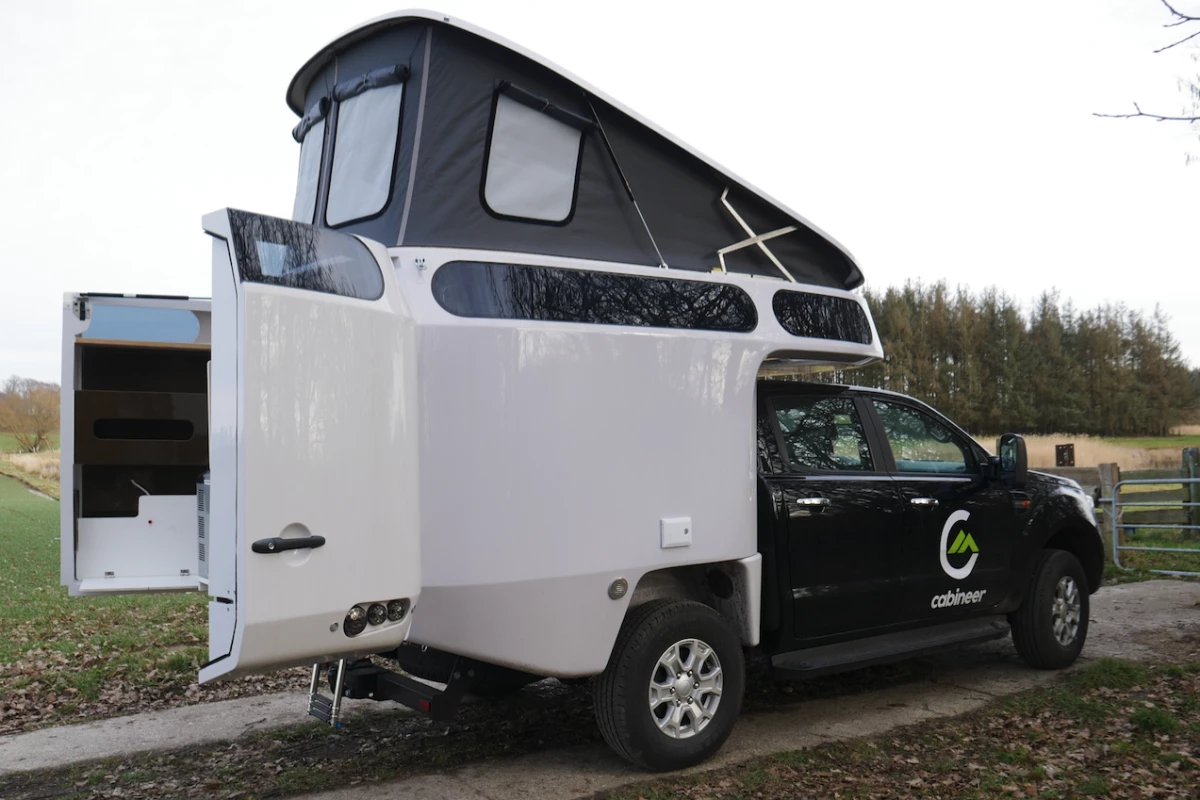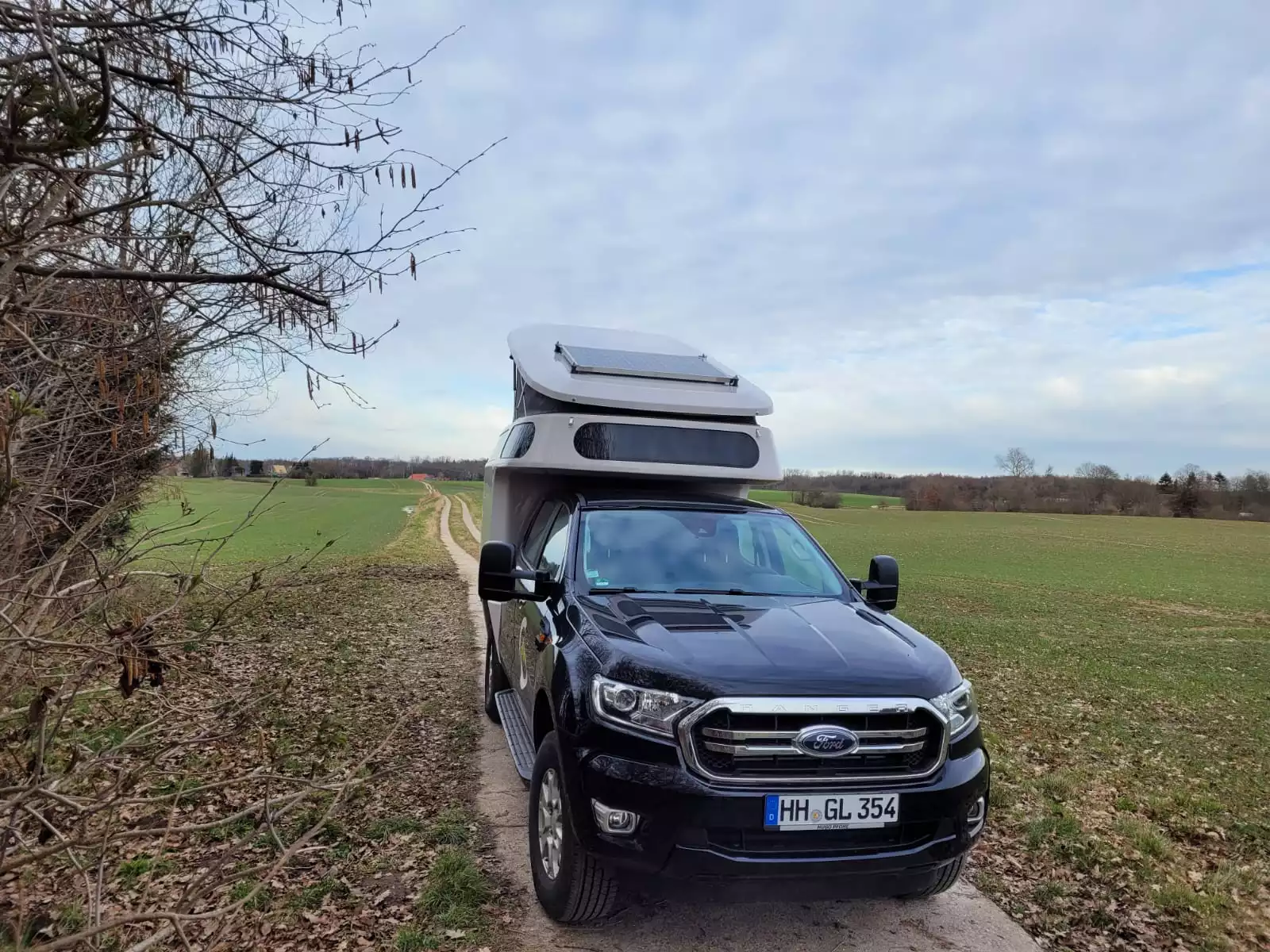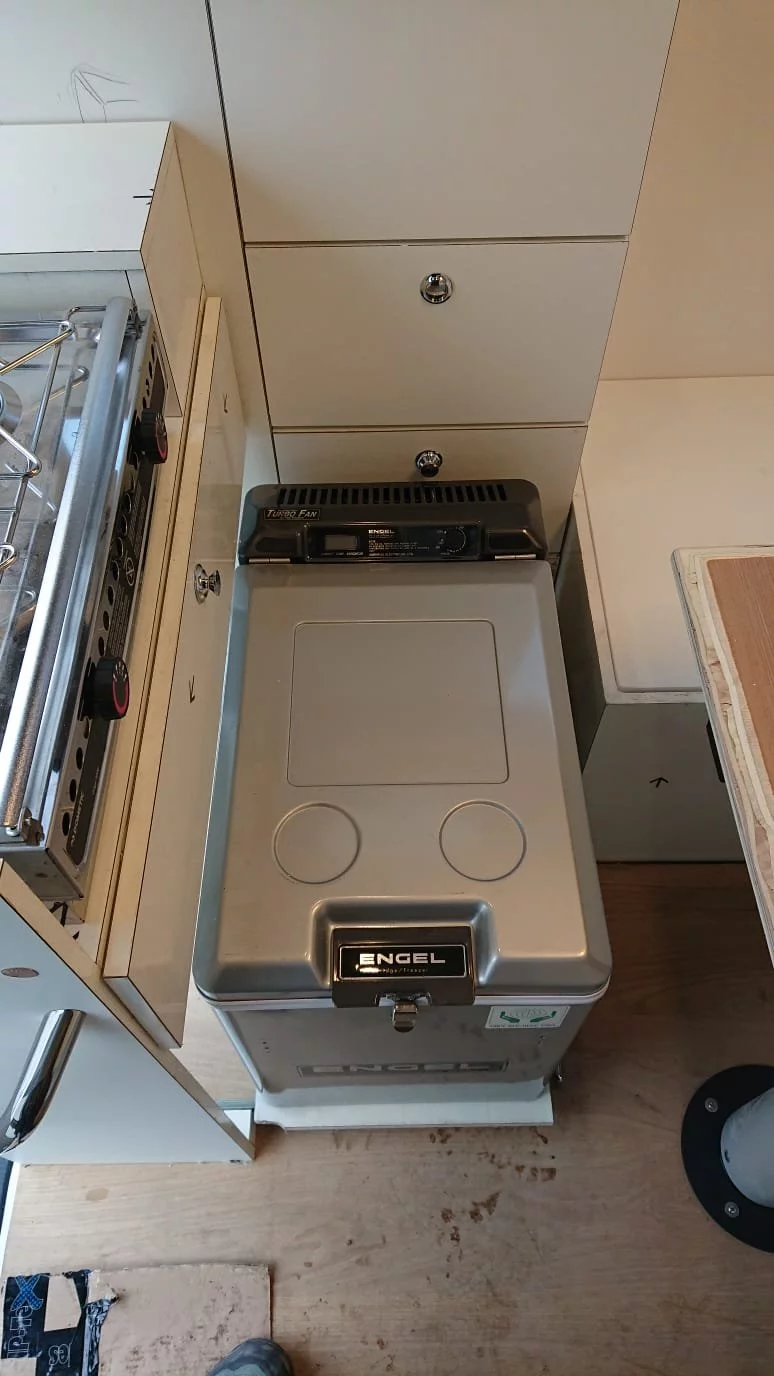If you enjoy exploring remote, pristine parts of the world, it follows that you probably want to protect those spaces — and camping around in a foam-filled box hauled by a big truck with low double-digit fuel economy isn't necessarily the best way of doing so. German startup Cabineer looks to encourage more sustainable, eco-friendly overland travel with a debut truck camper built from natural-fiber composite and insulated with cork. It features a space-optimized interior with toilet and shower and is ready to ride atop a midsize 4x4 truck chassis to explore destinations, local to exotic.
Cabineer's founders thought of the idea for a space-optimized truck camper when traveling the Pan-American Highway, one of the world's great overland routes, in a cramped Land Rover Defender. The experience was still a superlative once-in-a-lifetime, but living out of a 4x4 often left them wearied and gazing in envy at the myriad truck campers they saw along the way. Such campers offered more space, protection and features, but they weren't quite perfect, so Cabineer was born to address the perceived shortcomings and create a better small truck camper.
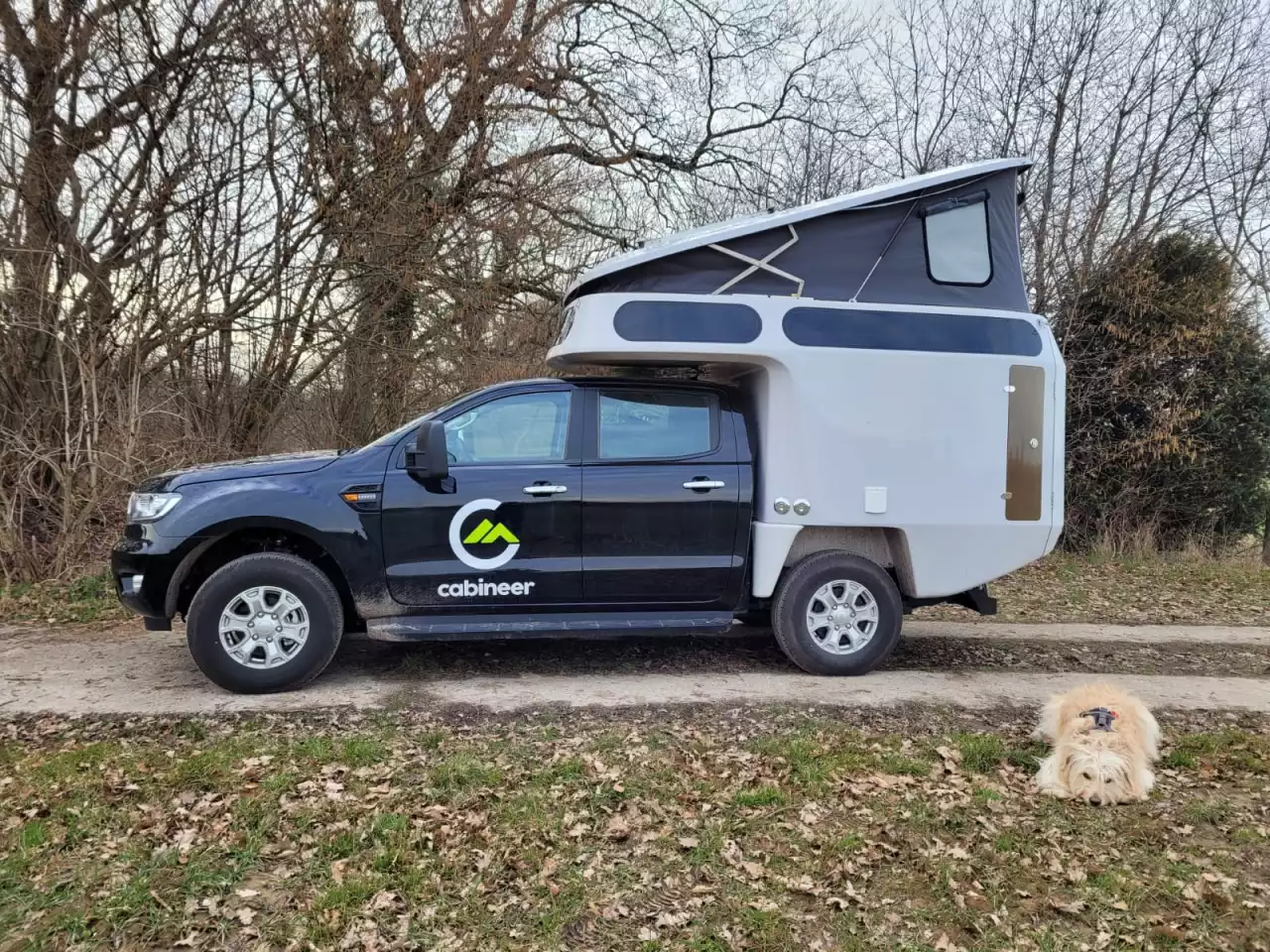
Cabineer admits that it hasn't abandoned plastic entirely, as the natural-fiber composite relies on a liquid-plastic resin, much like fiberglass or carbon fiber. More specifically, the material consists of flax fibers soaked in an epoxy resin that's made partly from linseed oil. Cabineer says the natural fibers are less dense than glass fibers, offering high rigidity at a low weight. Cork insulation furthers the sustainable construction of the camper.
Despite the use of plastic, Cabineer cites several ways in which NFC is more environmentally friendly than fiberglass or carbon fiber. It explains that the flax is a byproduct of linen production and requires less energy to produce than carbon or glass fibers. Both the flax and cork are sourced from European sources, eliminating some of the environmental impact of worldwide shipment. Cabineer estimates that the NFC produces 80 percent less CO2 than fiberglass over its lifespan.

The lightest material in the world won't have the desired eco-friendly impact if you end up with a massive yacht-like camper requiring a huge, inefficient vehicle to carry it into the woods. Cabineer avoids this potential pitfall by keeping its camper compact and lightweight enough to fit on a midsize pickup truck chassis, like the Ford Ranger pictured. It estimates that the camper weighs in around 1,100 lb (500 kg), impressively light for a chassis-mounted truck camper, leaving about 1,212 lb (550 kg) of payload on the base Ford Ranger (helped by the fact that the pickup bed is removed to make room for the camper).
Cabineer makes the most of its small interior with a compact, indoor/outdoor design that utilizes multifunctional and hideaway equipment. A pair of swinging rear doors loaded with fold-away worktops and storage compartments provides entry. Directly inside the driver-side rear door, the kitchen block stretches halfway across the width of the cabin holding a portable petrol dual-burner stove inside and a 45-L Engel fridge box below the counter. Bidirectional slide rails allow the fridge to slide both outdoors and indoors for access from either side, and a folding worktop on the door holds the stove for outdoor cooking.
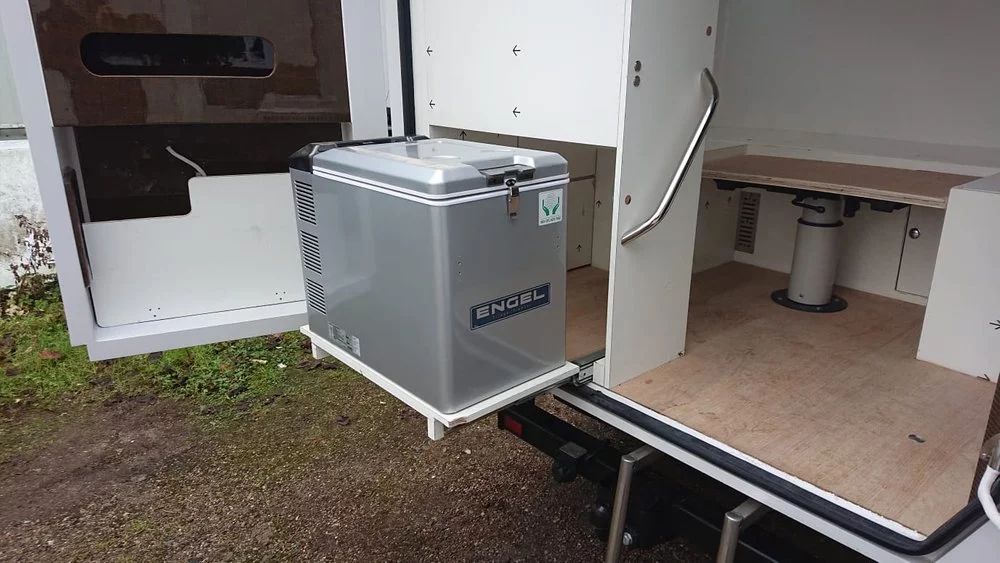
The kitchen block itself has a compact countertop space, with additional space available on the flip-up countertop on the closed passenger-side door and the long, narrow counter on the passenger-side wall. The latter is too narrow to accommodate a sink basin, so Cabineer installs a flip-up basin on the face of the wall console. The basin works with a permanently installed faucet atop the counter, which doubles as an outdoor shower sprayer. The initial prototype in photos isn't equipped for indoor showering, but Cabineer tells us that the model it's working on now has a built-in floor drain for showering inside.

The dinette seats up to four people on a wraparound sofa. The pedestal table drops down at night to create a 39 x 71-in (100 x 180-cm) bed for one adult or two children to complement the main 51 x 79-in (130 x 200-cm) double bed in the pop-up roof. Cabineer says the camper will sleep three adults or two adults and two children.
The roof bed lifts out of the way during the day to clear head space and provide access to the under-bed storage in the alcove. Further storage can be found in the cabinet next to the kitchen stove, the cubbies in the sink console and the tall external storage compartment. The frontmost bench seat houses a separating dry toilet below a hinged top, completing full bathroom capabilities.

A fully equipped Cabineer also includes a 100-Ah lithium battery wired to two 100-W solar panels, a 100-L fresh water tank and water pump, a 50-L gray water tank, a water heater, and a cabin heater with altitude kit. The fully equipped version costs €84,000, and Cabineer plans to offer several equipment levels down to a €45,000 empty shell. It says that the camper will fit most European double-cab pickups, while single- and extra-cabs might require a little more lead time and fitting.
Source: Cabineer
